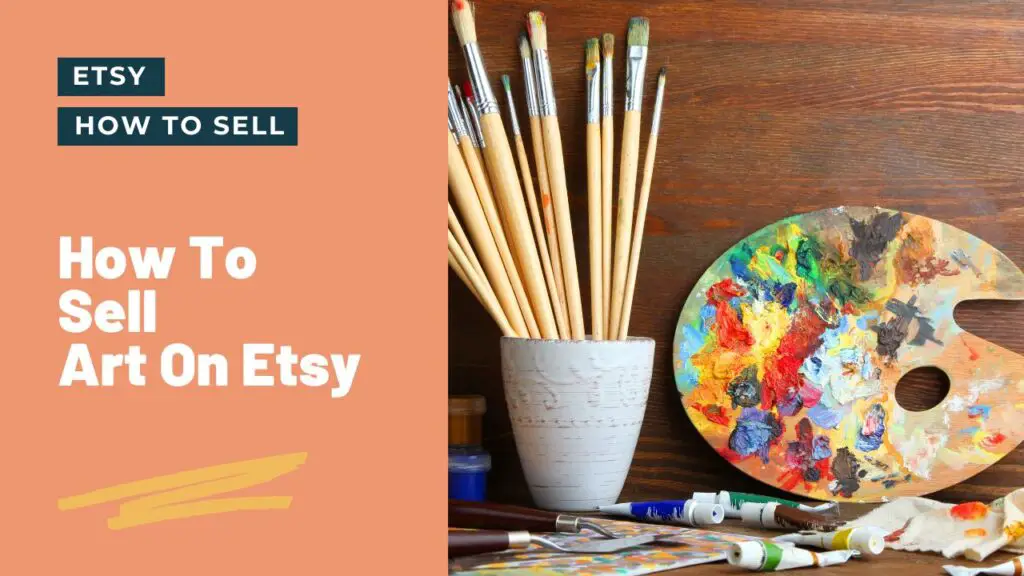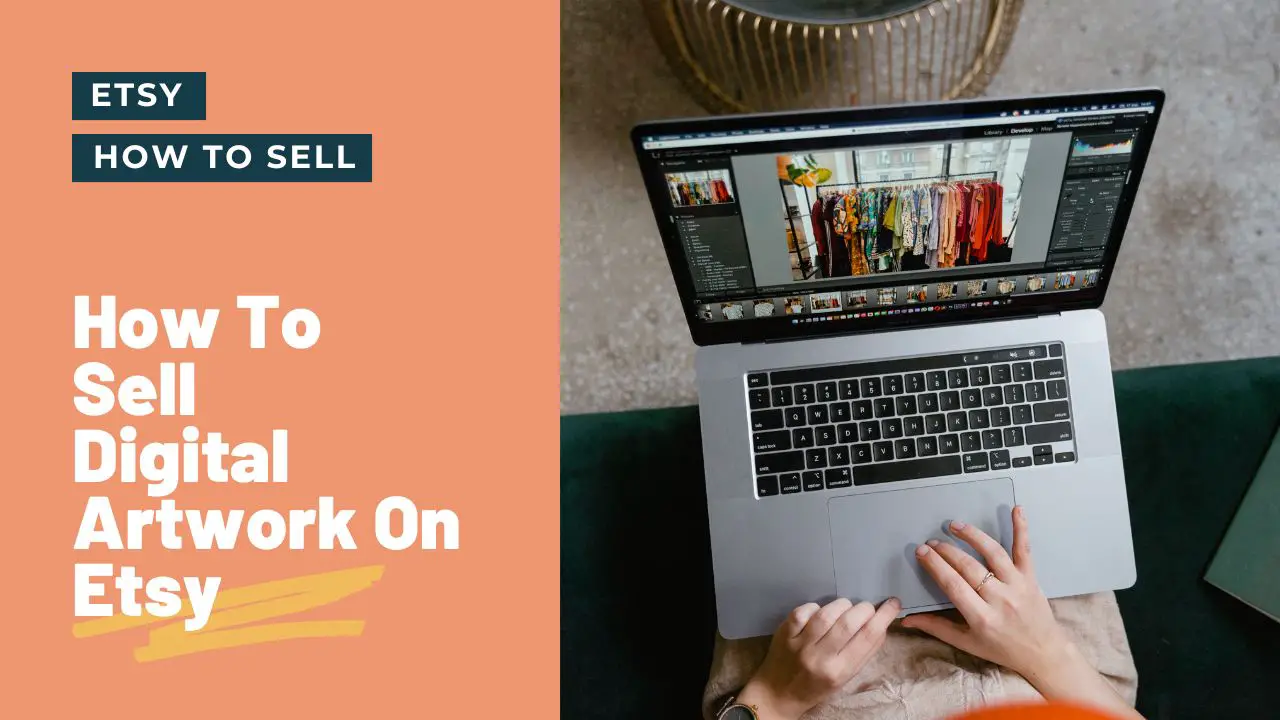If you’re an artist looking to sell your art online, you might want to consider Etsy. With millions of active buyers, Etsy is a great platform for artists to showcase their work and reach a wider audience.

However, selling art on Etsy can be a bit challenging, especially if you’re new to the platform. That’s why we’ve put together this guide to help you navigate the ins and outs of selling art on Etsy.
From setting up your shop and creating compelling listings to promoting your art and managing orders, we’ll cover everything you need to know to start selling on Etsy like a pro.
Whether you’re a painter, photographer, sculptor, or any other type of artist, read on to discover our tips and tricks for selling art on Etsy.
Benefits of Selling Art on Etsy
Etsy is a popular online marketplace for handmade goods and vintage items, but it’s also a great platform for artists to sell their art. Here are some of the benefits of selling art on Etsy:
Wide Audience
Etsy has millions of active buyers from all over the world, which means your art has the potential to reach a large audience. Whether you’re selling paintings, photographs, or sculptures, there’s a buyer out there who’s looking for what you’re selling.
Low Fees
Etsy’s fees are relatively low compared to other online marketplaces. You’ll pay $0.20 to list an item, and Etsy takes a 5% commission on the sale price of your item. This makes it easier for artists to keep their prices competitive and still make a profit.
Customization
Etsy allows you to customize your shop and listings to reflect your brand and style. You can upload your own banner and logo, choose your own colors and fonts, and write your own descriptions. This helps you stand out from other sellers and create a unique brand for your art.
Setting Up Your Etsy Shop
Before you can start selling on Etsy, you’ll need to set up your shop. Here’s how to do it:
- Create an Etsy account: If you don’t have an Etsy account, sign up for one at www.etsy.com.
- Set up your shop: Click on “Sell on Etsy” and follow the prompts to set up your shop. You’ll need to choose a shop name, create a shop banner and logo, and add your product listings.
- Add your product listings: When adding your product listings, make sure to include high-quality photos, detailed descriptions, and accurate pricing and shipping information.
- Set up your payment and shipping options: Choose the payment and shipping options that work best for you and your customers.
- Publish your shop: Once you’ve completed all the steps, publish your shop and start promoting your products.
Creating Your Art Listings
Your art listings are the heart of your Etsy shop, so it’s important to create listings that are compelling and informative. Here are some tips for creating great art listings:
Write a Compelling Title
Your title should be descriptive and eye-catching. Use keywords that buyers might search for, but also make sure your title accurately reflects your art.
Write a Detailed Description
Your description should provide buyers with all the information they need to make a decision about your art. Describe the materials you used, the size of the piece, and any other relevant details. You can also tell the story behind the piece or share your inspiration.
Use High-Quality Photos
Your photos are what will really sell your art, so make sure they’re high-quality and show your art in the best possible light. Use natural lighting and a neutral background, and take photos from different angles.
Photography and Presentation Tips for Your Art
In addition to taking great photos of your art for your Etsy listings, you’ll also want to think about how you present your art in your shop. Here are some tips:
Use Consistent Lighting and Backgrounds
Consistent lighting and backgrounds will help create a cohesive look for your shop. Use the same lighting and background for all your photos to create a professional look.
Show Your Art in Context
Showing your art in context can help buyers visualize how it will look in their own space. For example, if you’re selling a painting, show it hanging on a wall with furniture around it.
Show Your Art in Different Sizes
If you’re selling art in different sizes, show photos of each size so buyers can see how it will look in different spaces.
Etsy SEO for Your Art Listings
Etsy SEO, or search engine optimization, is the process of optimizing your listings so they show up in search results when buyers search for certain keywords. Here are some tips for optimizing your art listings for Etsy SEO:
Use Relevant Keywords
Use relevant keywords in your title, tags, and description. Think about what buyers might search for when looking for art like yours.
Not sure what to write in your descriptions? Keywords and phrases are key to getting found on Etsy and choosing and using the right ones will have a massive impact on how much money you ultimately make.
I use Etsy Hunt for all of my keyword and tag research. Etsy Hunt’s massive product database and AI learning makes finding keywords and tags easy. They even offer a free account, so why not try Etsy Hunt today.
Use Long-Tail Keywords
Long-tail keywords are more specific than general keywords, and they can help your listings show up in more targeted searches. For example, instead of using the keyword “painting,” use “large abstract painting” or “oil painting on canvas.”
Fill Out All Your Listing Details
Make sure you fill out all the details for your listing, including the materials you used, the size of the piece, and the shipping options. This will give Etsy more information to work with and help your listings show up in more relevant searches.
Pricing Your Art on Etsy
Pricing your art can be tricky, but it’s important to get it right if you want to make sales on Etsy. Here are some tips for pricing your art on Etsy:
Research Your Competition
Look at what other artists are charging for similar pieces of art. This will give you a sense of what buyers are willing to pay and help you set a competitive price.
Factor in Your Costs
Make sure you factor in all your costs when setting your prices, including materials, shipping, and Etsy fees. You also need to factor in the time and effort it took to create the piece.
Offer Different Price Points
Offering art at different price points can help you reach a wider audience. For example, you could offer smaller pieces at a lower price point and larger pieces at a higher price point.
“Cheaper” doesn’t always mean “Better”. Pricing your products below your competitors just leads to a price war.
Also, a product with a higher price can lead the customer into thinking your product is worth more. A highly priced product may sell less, but make more money over time due to higher profit margins.
Shipping and Handling for Your Art
Shipping and handling can be a bit tricky when it comes to selling art on Etsy. Here are some tips:
Use Sturdy Packaging
Make sure you use sturdy packaging to protect your art during shipping. You don’t want it to arrive damaged.
Offer Different Shipping Options
Offering different shipping options can help you reach more buyers. For example, you could offer both standard and expedited shipping.
Factor in Shipping Costs
Make sure you factor in the cost of shipping when setting your prices. You don’t want to lose money on shipping.
All packages should be sent with tracking included. It is an unavoidable fact that with the rise of Amazon and their industry leading shipping, customers now expect affordable tracking as standard.
Whilst it does benefit your customer it can help you, as having tracking is invaluable when trying to find lost packages
Promoting Your Etsy Shop and Art
Promoting your Etsy shop and art is key to making sales on the platform. Here are some tips:
Use Social Media
Use social media to promote your Etsy shop and art. Share your listings on Facebook, Twitter, and Instagram, and use relevant hashtags to reach a wider audience.
Offer Discounts and Sales
Offering discounts and sales can help incentivize buyers to make a purchase. You could offer a discount for first-time buyers or run a sale during the holidays.
Products listed with Free Shipping are boosted in Etsy search. This means you have a better chance of being seen.
Also, listings with Free Shipping convert sales better – even if the shipping price is just included in the product price
Attend Art Fairs and Markets
Attending art fairs and markets can help you reach buyers in person and promote your Etsy shop.
Customer Service for Your Etsy Shop
Customer service is key to building a successful Etsy shop. Here are some tips:
Respond to Messages Promptly
Respond to messages from buyers promptly, even if you don’t have an answer right away. Let them know you’re working on it and will get back to them as soon as possible.
Offer Refunds and Exchanges
Offering refunds and exchanges can help build trust with buyers and encourage them to make a purchase.
Follow Up After Sales
Follow up with buyers after a sale to make sure they’re happy with their purchase. This can help build repeat business and positive reviews.
A 5 Star rating is the backbone of a strong Etsy store. be sure to encourage successful orders to leave reviews, and work hard to rectify issues for unsuccessful orders.
Often its better to take a hit to rectify an issue then to get a bad review on Etsy
Conclusion and Final Thoughts
Selling art on Etsy can be a bit challenging, but with the right approach, it can also be very rewarding.
By setting up your shop, creating compelling listings, optimizing for Etsy SEO, pricing your art correctly, and offering great customer service, you can build a successful Etsy shop that showcases your art to a wider audience.





